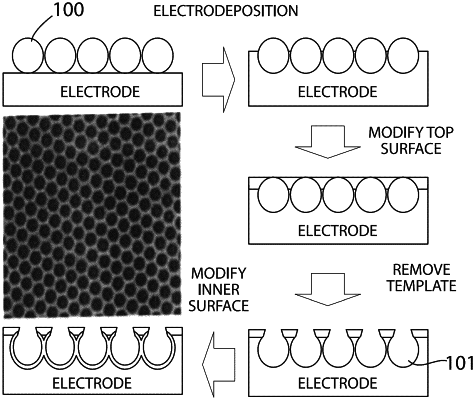|
1. A microfluidic device for detection of at least one analyte within a fluid, the device comprising a sample chamber for receiving the fluid, a detection chamber, and a waste reservoir, each of the sample chamber, detection chamber and waste reservoir being in fluid communication with one another such that the received fluid can pass from the sample chamber through the detection chamber to the waste reservoir, the microfluidic device further comprising a substrate having a first surface defining entrances to a plurality of chambers defined in the substrate, the plurality of chambers forming a microcavity array within the detection chamber, surfaces of the chambers defining a second surface of the substrate, at least one of the first surface or the second surface being configured to selectively target and capture the at least one analyte and thereby operably effect a blocking of the entrance to at least one of the chambers by plugging an inside of the chamber or by immobilizing the at least one analyte across an opening of the chamber, the device further comprising an electrode arrangement configured to provide an electrochemical output response characteristic and wherein the electrochemical output response characteristic of the microfluidic device as provided by the electrode arrangement is operably varied by the blocking of the entrance to the at least one of the chambers by the analyte, thereby providing an indication of the presence of the analyte within the fluid.
|
